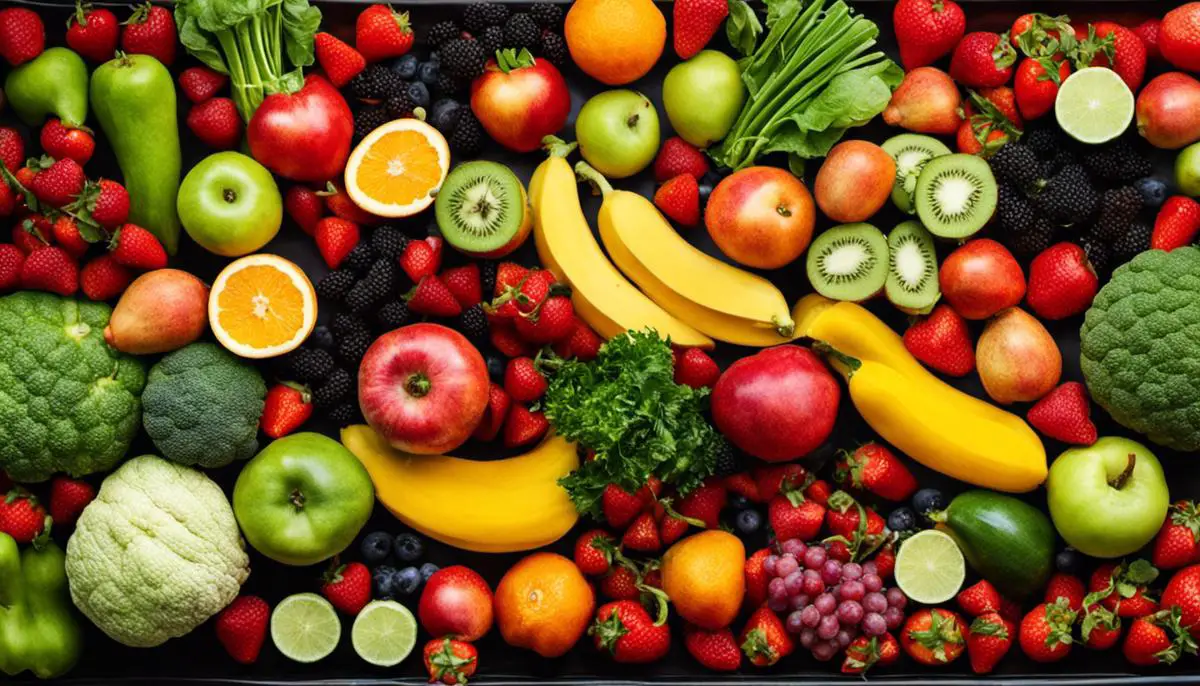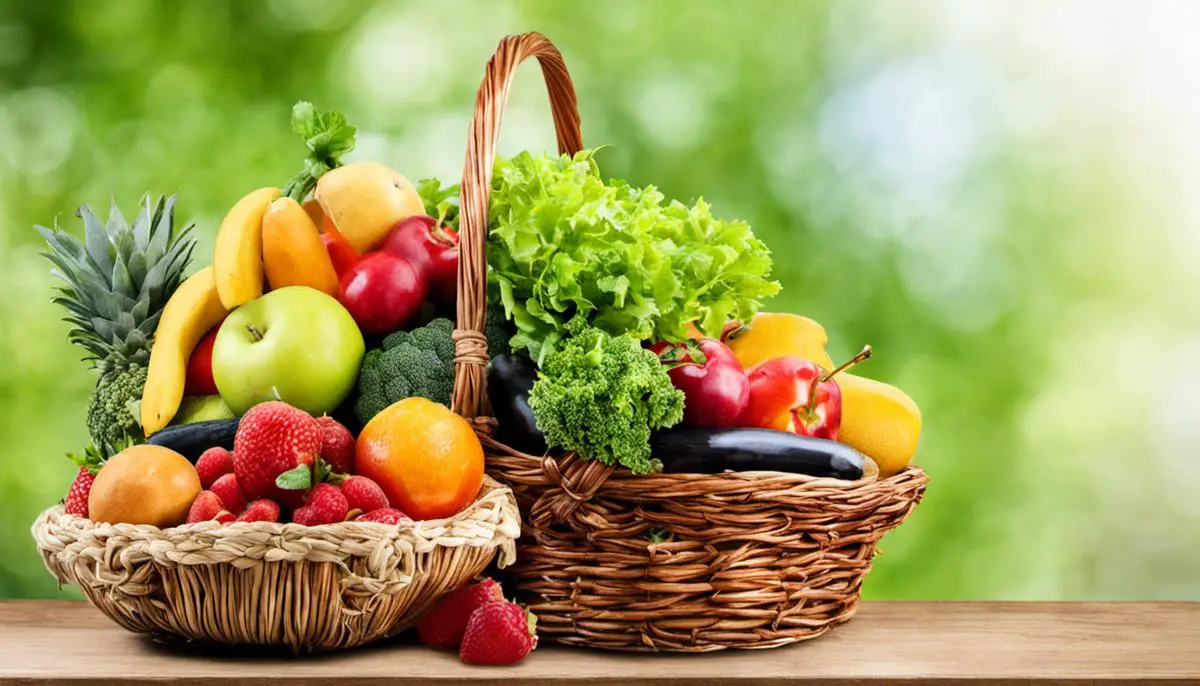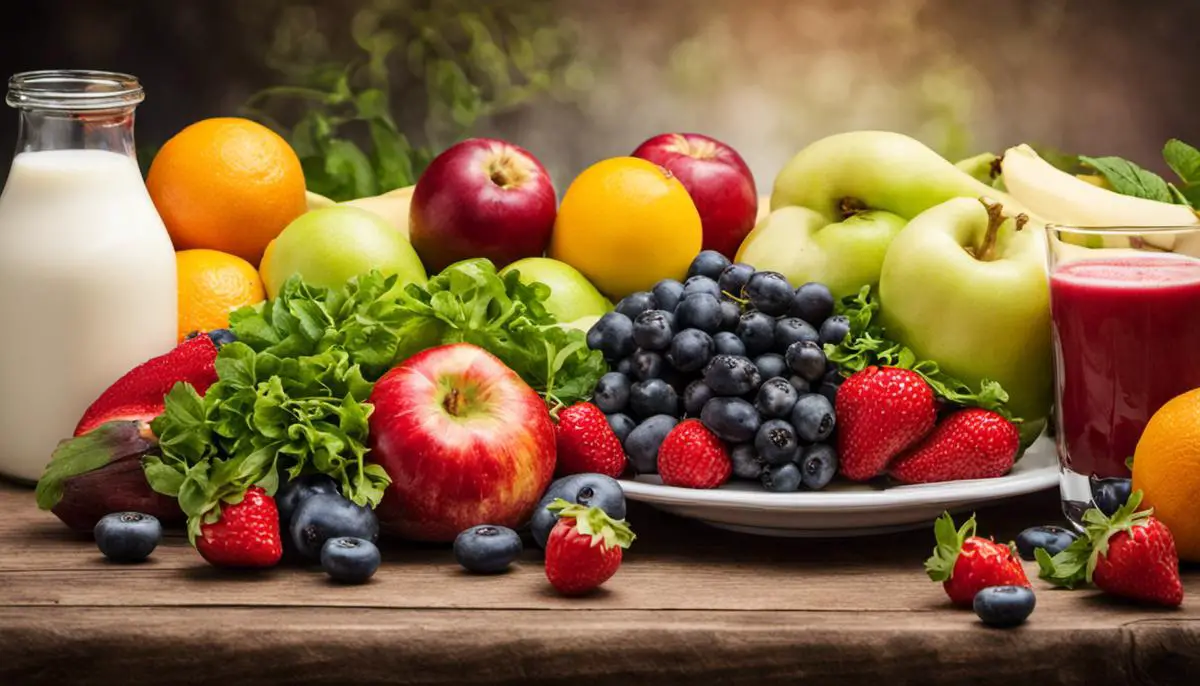When a new life is welcomed into the world, the mother transitions into a vital role that is critical in nurturing and providing for the newborn. Among the primary responsibilities, breastfeeding stands as a remarkable gift, offering immeasurable benefits to both mother and child. However, the nutritional demands of breastfeeding make it as much about the mother’s diet as about the baby’s sustenance. This exploration into the breastfeeding diet aims to illuminate the necessary aspects – ranging from its importance, what should be included, debunking myths along the way, and even delving into special conditions like veganism or allergies that require custom adjustments. Cutting through the ambiguity, it is an endeavor to guide mothers in securing optimal nutrition for themselves and their babies, moving beyond mere survival to thrive.
Understanding the Importance of a Breastfeeding Diet
The Importance of a Breastfeeding Diet
Breastfeeding requires significant energy and nutrients to support the production of healthy and nutritious milk, meaning the diet of a breastfeeding mother is fundamental. This is not just to maintain the health of the baby, but also to ensure the mother has sufficient energy and nutrient levels. Feeding a newborn is a demanding process and can increase a mother’s daily calorie need by an additional 500 calories in the first six months of breastfeeding, and by 400 in the second six months.
Nutrient-Rich Food Influences Milk Production
A breastfeeding mother’s diet directly impacts the quality of breast milk produced. For instance, omega-3 fatty acids, primarily found in fish and algae, are a key component of breast milk and contribute to the baby’s brain development. Iron, a crucial element found in meats, legumes, and green leafy vegetables, helps prevent anemia in both mother and baby. Following a diverse diet rich in fruits, vegetables, lean proteins, and whole grains generally ensures a good supply of these important nutrients.
The Role of Hydration in Breastfeeding
Hydration is also a vital element in successful breastfeeding as it aids in milk production. Breastfeeding mothers should aim to consume at least eight cups of fluids daily. This could be in the form of water, milk, juice, or soup. However, it is advisable to limit caffeine intake as it can lead to dehydration and will pass into breast milk, possibly disrupting baby’s sleep.
Breastfeeding and Allergic Reactions
A well-rounded and diverse diet can also potentially protect the baby against allergies. While evidence is still preliminary, studies suggest that exposing the baby early on to a variety of foods through breast milk may create a tolerance for these foods later in life. However, if a baby reacts negatively after a feeding, shown through symptoms like excessive gas, fussiness or rash, it may be necessary for the mother to adjust her diet and consult healthcare providers.
To emphasize, the influence of a breastfeeding mother’s diet on the infant’s growth and her own health is substantial. A well-balanced, nutrient-rich diet is key in guaranteeing that the mother and baby both receive the essential nutrients they require during this vital stage.

What to Include in a Breastfeeding Diet
The Significance of a Nourishing Breastfeeding Diet
Breastfeeding contributes significantly to a baby’s growth and development by supplying necessary nutrients, while concurrently benefiting the mother. This process involves an increased need for energy and nutrients from the mother. As such, a robust and balanced diet is crucial for nursing mothers.
Essential Nutrients in a Breastfeeding Diet
A number of specific nutrients are particularly important for breastfeeding mothers. Here they are, along with examples of food sources for each:
- Protein: Vital for the growth and development of the baby. Protein-rich foods include lean meat, poultry, fish, eggs, dairy products, lentils, chickpeas, and beans.
- Calcium: Essential for the development of the baby’s bones and teeth, as well as for the mother’s skeletal health. Dairy products like milk, cheese, and yogurt are rich in calcium, as are spinach and broccoli.
- Iron: It supports the mother’s recovery from childbirth and helps prevent anemia. Rich sources include red meat, fortified cereals, spinach, lentils, and tofu.
- Vitamin A: Critical for the baby’s vision development and immune function. Carrots, sweet potatoes, spinach, and kale are high in vitamin A.
- Vitamin D: This nutrient aids in calcium absorption and is essential for bone health. Sources of vitamin D include sunlight, fortified dairy products, and fatty fish like salmon.
- Folic Acid: Important for the early development of the baby’s nervous system. Leafy green vegetables, fortified cereals, and citrus fruits are good sources.
- Omega-3 Fatty Acids: Particularly DHA, are vital for the baby’s brain development. Fish, especially salmon and sardines, flaxseeds, and walnuts are rich in omega-3s.
Food Groups to Focus On
- Fruits and vegetables: These are packed with vitamins, minerals, and fiber. Aim to include a variety of colors to get a broad spectrum of nutrients.
- Grains: Choose whole grains when possible. They provide energy, along with fiber, iron, and B-vitamins.
- Proteins: This group includes both animal and plant sources. Proteins are essential for tissue repair and growth.
- Dairy: Aim for three servings per day to meet calcium needs. If dairy isn’t an option, look for fortified non-dairy alternatives.
- Healthy fats: Avocados, nuts, seeds, and oils provide calories needed for breastfeeding, along with other important nutrients.
Hydration for Breastfeeding Mothers
Keeping well-hydrated is also important for breastfeeding mothers. Drinking plenty of fluids, especially water, helps in maintaining milk production.
Understanding the Basics of a Breastfeeding Diet
When nursing, it’s typically advised to moderate your caffeine consumption and steer clear of alcohol. It’s also crucial to consult a healthcare professional about any medications or herbal supplements you’re taking, as these can sometimes permeate into the breast milk.
Ideally, a breastfeeding diet should be balanced and diverse, taking into account the heightened nutritional requirements that come with lactation. Paying attention to your body’s signals and eating when you’re hungry is not just essential for fulfilling your nutrient needs but also for stimulating milk production for your newborn.

Common Misconceptions and Myths about Breastfeeding Diets
Myth Buster: Avoidance of Certain Foods to Ward Off Allergies
There’s a prevalent myth that excluding certain foods during breastfeeding can diminish a baby’s risk of developing allergies. But scientific research hasn’t provided substantial evidence supporting this claim. Often, foods like dairy, eggs, peanuts, and fish are omitted, but the American Academy of Pediatrics suggests mothers embrace a wide array of foods during breastfeeding, mirroring their dietary habits during pregnancy. Therefore, a mother should not abstain from any particular food unless her baby has a diagnosed allergy or intolerance towards it.
Myth 2: Alcohol Consumed Can’t Reach the Baby
Some might believe that alcohol consumed by a breastfeeding mother does not affect her infant. This is inherently untrue. Alcohol can pass into breast milk and possibly affect the baby. The safest option is not to drink, but if a mother does choose to drink, it’s essential to do so in moderation and not to breastfeed until the alcohol has left the system.
Myth 3: Foods That Cause Gas Can Affect the Infant
Vegetables like cabbage and broccoli, and legumes like beans and lentils, are often blamed for causing gas in breastfeeding babies, but there’s no scientific evidence supporting this. While these foods might cause gas in the mother, it doesn’t translate to the baby in the same way.
Myth 4: Spices Should Be Avoided in the Breastfeeding Diet
Some believe that a breastfeeding mother should avoid eating spicy food. However, various studies suggest that consuming a variety of flavors can help expose the nursing baby to different tastes through the breast milk, possibly aiding later acceptance of solid foods.
Myth 5: Caffeine Consumption is Harmful
Caffeine consumption during breastfeeding is typically discouraged because of the fear that caffeine will stimulate the baby, making them irritable and sleepless. While it is indeed possible for a baby to ingest caffeine through breast milk, this usually only becomes a concern with high amounts. As a guideline, the American Academy of Pediatrics recognizes an intake of up to 300 mg of caffeine per day as safe during breastfeeding. This is equivalent to about two cups of coffee.
Myth 6: Mothers Should Consume More Dairy for Breastmilk Production
Breastmilk does contain calcium, but the mother’s intake of dairy products does not directly affect its content. Breastfeeding women do require more calcium, but this can come from a variety of foods—not just dairy.
Myth 7: A Mother Must Eat More to Make More Milk
Breastfeeding indeed requires more energy, but one of the greatest breastfeeding myths is that mothers should ‘eat for two’. Quality, not quantity, is the key. A well-balanced and nutritious diet can ensure adequate milk production, not necessarily consuming more calories.
It goes without saying that every individual is unique. This means that the diet which works wonders for one breastfeeding mother may not be as effective for another. Instead of attempting to modify your diet on your own, it’s often the best course of action to consult healthcare professionals. They can provide tailored nutritional advice optimally suited for your specific needs during breastfeeding.

Breastfeeding Diet for Special Conditions
Essential Nutrients for a Balanced Breastfeeding Diet
The main building blocks of a breastfeeding diet are energy, protein, vitamins, and minerals. On average, breastfeeding utilizes an additional 500 calories per day. Hence, integrating foods dense in nutrients into your diet is of paramount importance. Proteins like lean meats, fish, eggs, tofu, beans, and dairy products should be part of your daily intake. Supplementing your diet with fresh fruits, vegetables, whole grains, healthy fats, and ample fluids ensures you have a thoroughly balanced diet.
Breastfeeding Diet and Allergies
For breastfeeding mothers with allergies, dietary modifications should be made in consultation with a health professional. For instance, lactose intolerant mothers may include lactose-free milk or milk substitutes like almond milk, soy milk, or oat milk in their diet. Mothers who experience allergies to nuts may use seeds as an alternative, like flaxseeds or chia seeds which are rich in heart-healthy omega-3 fatty acids.
It is important to monitor the baby for potential allergic reactions, as allergens can be transmitted through breast milk. Thus, if the baby has known food allergies, the breastfeeding mother should avoid foods containing said allergens.
Vegan Breastfeeding Diet
A vegan diet can still provide all the necessary nutrients for breastfeeding, with the mother focusing on nutrient-dense plant-based foods. Sources of protein can be found in lentils, chickpeas, tofu, and quinoa. Iron, which is crucial for a breastfeeding mother, can be found in fortified breakfast cereals, dried fruits, and pulses.
Calcium-rich food options include calcium-fortified non-dairy milk, tofu made with calcium, and leafy green vegetables like spinach, kale, and broccoli. To meet the needs of Omega-3 fatty acids, seeds like chia, flax, and hemp can be used.
It is suggested for individuals following a strict vegan diet to consider supplements to make up for nutrients otherwise found in animal products like Vitamin B12, Vitamin D, and omega-3 fatty acids if not getting enough from food.
Breastfeeding Diet for Mothers with Diabetes
A breastfeeding diet for mothers with diabetes does not drastically differ from the typical breastfeeding diet. The key factor is the regulation of blood glucose levels. This can be achieved through regular meals featuring lean proteins, whole grains, fresh produce, and healthy fats.
Strategies such as consuming low-glycemic carbohydrates like whole grains, beans, and green leafy vegetables can help control blood sugar levels. A consultation with a dietitian can help breastfeeding mothers with diabetes to manage their diet and establish regular eating routines to sustain a steady blood glucose level.
Final Thoughts on Dietary Guidelines for Breastfeeding Mothers with Specific Needs
For breastfeeding mothers with specific health conditions, it is crucial to monitor their health and nutrient consumption carefully. It’s essential to stay in touch with healthcare professionals to ensure a balanced diet. Some foods might need to be eliminated, but the real goal is to ensure that both the mother and the child are getting sufficient nutrition for optimal growth, well-being, and overall health.

Photo by kaerieann on Unsplash
Meal Plans and Recipes for a Breastfeeding Diet
Diving Deeper into the Concept of a Breastfeeding Diet
When we talk about a breastfeeding diet, we are referring to the specific nutritional guidelines that a nursing mother needs to follow to facilitate healthy lactation and ensure the baby’s overall wellness. This diet calls for a rich mix of nutrients such as proteins, vitamins, carbohydrates, and beneficial fats. According to nutritional experts, breastfeeding mothers should ideally consume an extra 500 calories per day compared to women who aren’t breastfeeding.
Key Nutritional Components for a Breastfeeding Diet
The primary components of a breastfeeding diet should consist of proteins, whole grains, fruits, vegetables, and healthy fats. This supports the production of nutritious breast milk and the mother’s health recovery after childbirth. Some specific nutrient-dense foods recommended for a breastfeeding diet include lean meats, fish, eggs, beans, whole grains, quinoa, leafy green vegetables, sweet potatoes, colorful fruits, avocados, chia seeds, and nuts.
Sample Meal Plans
Taking into consideration the key nutritional components, below is a sample meal plan for a breastfeeding mother:
- Breakfast: A bowl of oatmeal topped with berries and a spoonful of almond butter, accompanied by herbal tea or a fruit smoothie.
- Morning Snack: A banana and a handful of nuts.
- Lunch: A quinoa salad with lots of colorful veggies, grilled chicken, and a sprinkle of sunflower seeds.
- Afternoon Snack: Greek yogurt with honey and chia seeds.
- Dinner: Grilled salmon with a side of sweet potatoes and steamed broccoli.
- Night Snack: An apple with peanut butter.
It’s important to note this is just a sample plan and individuals should adjust their meals according to their dietary preferences and restrictions.
Easy-to-prepare Recipes
Some easy-to-prepare recipes that align with a breastfeeding diet include:
- Overnight oats: Made with rolled oats, almond milk, Greek yogurt, chia seeds, and topped with fresh fruits.
- Quinoa salad: Contains cooked quinoa, various chopped vegetables, lean protein of choice, and a simple dressing with olive oil and lemon.
- Veggie stir-fry: Made with a variety of different vegetables and tofu or lean meat.
Managing Diet with a Busy Schedule
Despite the busy schedule of a new mother, it is crucial to prioritize meal planning. Advance preparation of meals, buying pre-cut vegetables, utilizing a slow cooker for batch meals, opting for one-pot dishes, and making use of leftovers can all aid in managing diet with a busy schedule. Meal delivery services may also be a useful option.
Shortcut Methods
There are several shortcut methods for easing meal preparation for breastfeeding mothers. For example, using a blender can make the process of preparing healthy shakes, soups, and baby foods simpler. Moreover, investing in a pressure or slow cooker can save tons of time in cooking. Pantry staples such as canned beans, frozen vegetables, and pre-cooked grains can also be utilized to whip up quick and healthy meals.
Additional Resources
Nutrition educational materials, local support groups, online platforms, or speaking to a registered dietitian or lactation consultant are all excellent resources to aid in developing a sustainable and beneficial personal breastfeeding diet plan.

Properly nourishing oneself while breastfeeding is far from an easy task; it encompasses specific nutritional intake, breaking free of cultural myths and misconceptions, and navigating through personal dietary restrictions or illnesses. However, understanding and embracing a well-thought-out breastfeeding diet goes a long way in fostering robust health and development for the baby while maintaining the mother’s well-being. With knowledge comes power, and with the right guidance, mothers can strike a balance even within their busy schedules. It all boils down to the mother’s commitment, willingness to learn, and determination in making healthy choices for her and her baby. Hopefully, this guide is a helpful companion on this beautiful journey—one that nourishes life, strengthens bonds, and promises a healthier future.
